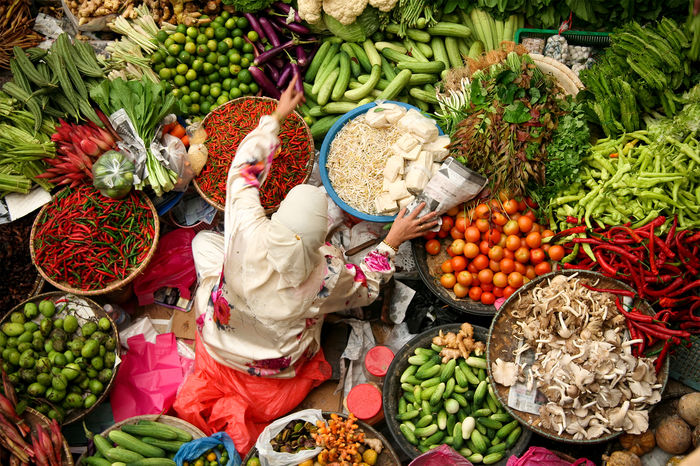Insects and algae: The ‘Future foods’ which could combat malnutrition
In this next installment of Cambridge Spotlight, Emily Sissons explains how insects and algae might soon be part of our everyday diets

Food insecurity and malnutrition remain persistent problems affecting the world’s most vulnerable populations. Organisations such as the United Nations have made some advancements in addressing these problems, which currently impact around 690 million people; however, a recent study from the University of Cambridge proposes that newer, more radical methods are needed.
The study, authored by Dr Asaf Tzachor, Catherine Richards, and Lauren Holt (part of the interdisciplinary Centre for the Study of Existential Risk at the University of Cambridge) has been published in Nature Food. It advocates for the use of ‘future foods’, alternative food sources produced using non-traditional agricultural techniques. These have the potential to revolutionise food production.
Diets are currently based on plant-source foods (PSF) – primarily wheat, maize, and soybean – and animal-source foods (ASF), such as meat, dairy, and eggs. Both of these food types are vulnerable to external disturbances including pathogens such as Salmonella and Escherichia coli (E. coli) as well as environmental changes.
“Microalgae, macroalgae, and insect larvae can all be incorporated into foods such as energy bars, pasta, and burgers.”
In comparison, future foods are more sustainable yet still highly nutritious. It is hoped they can be used to create ‘risk resilient diets’ which have a greater resilience to local and global disturbances, thereby providing the macronutrients and micronutrients necessary for human health on a more consistent basis.
The report advocates for increasing the global production and consumption of future foods such as microalgae including spirulina and chlorella, which have fast growth rates that can be further increased by the use of light-emitting diodes. It also promotes macroalgae including sugar kelp and mussels, which can now be farmed on industrial scales in coastal and offshore environments (overcoming the spatial constraints posed by their usual growth locations). It is also hoped that insect larvae – such as those of the black soldier fly, the house fly, and the mealworm beetle – can be produced successfully at large scales.
In anticipation of public reluctance to eat these foods, the researchers propose that they could be used as ingredients in popular foods, rather than eaten whole. Microalgae, macroalgae, and insect larvae can all be incorporated into foods such as energy bars, pasta, and burgers. The report also highlights mycoprotein, an established popular source of protein created from fungi which has been successfully used in numerous alternative meat products, such as Quorn®.
Polycentric food networks
Future foods are developed within closed systems with carefully controlled physical, chemical, and biological conditions; this reduces the risks associated with the traditional farming of PSF and ASF, thereby creating a more stable food supply. Their resilience is further increased by the use of modular environments, which consist of multiple stacked nursery or bioreactor compartments and create a system which can be scaled according to demand.
“to future-proof our food supply we need to integrate completely new ways of farming into the current system.”
The lack of flexibility within traditional food production techniques was highlighted by the Covid-19 pandemic, which disrupted the globalised supply chains that traditional food production depends on. It showed the need for a modular production system which can quickly adapt to unexpected spatial and temporal disturbances, especially within supply chains.
These units are then used to build decentralised ‘polycentric food networks’, which are highly spatially diverse production systems which can be located across multiple geographic locations, reducing the risk of localised disruptions or reliance on certain regions.
Polycentric food networks also enable isolated communities – such as the Pacific Island States – to produce their own food sources. The Pacific Island States have been unable to use traditional PSF and ASF on a large scale, and have instead been forced to rely on unstable and sometimes volatile global supply chains.
An unstable environment
Recent anthropogenic climate change has further increased the fragility of agricultural ecosystems through the increasing frequency and intensity of hazards such as droughts, floods, wildfires, and frosts. The disruptive impacts of climate change are expected to be most severe in developing countries, which already have very high rates of malnutrition and food insecurity.
Traditional food systems are therefore currently facing the dual pressures of Covid-19 and anthropogenic climatic change, with limited capacity to adapt to the rapidly changing pressures these create. As a result, Dr Asaf Tzachor has proposed that ‘to future-proof our food supply we need to integrate completely new ways of farming into the current system.’
Reliance on traditional systems of agricultural production should be minimised; instead, new forms of production should be incorporated to produce food that is more stable, nutritious, and sustainable. The use of future foods will hopefully ensure that this is accessible to all.
 News / Uni to ‘review’ tripos rankings and weekend lectures in undergrad teaching overhaul10 April 2025
News / Uni to ‘review’ tripos rankings and weekend lectures in undergrad teaching overhaul10 April 2025 News / Rowing row continues as Oxford and Cambridge scrap women’s trial race9 April 2025
News / Rowing row continues as Oxford and Cambridge scrap women’s trial race9 April 2025 News / PETA urges Cambridge dictionary to change ‘derogatory’ rat definition11 April 2025
News / PETA urges Cambridge dictionary to change ‘derogatory’ rat definition11 April 2025 News / First candidate to announce chancellorship bid pledges to tackle bullying 12 April 2025
News / First candidate to announce chancellorship bid pledges to tackle bullying 12 April 2025 Lifestyle / Blind Date: ‘She owes me a round of drinks!’13 April 2025
Lifestyle / Blind Date: ‘She owes me a round of drinks!’13 April 2025




